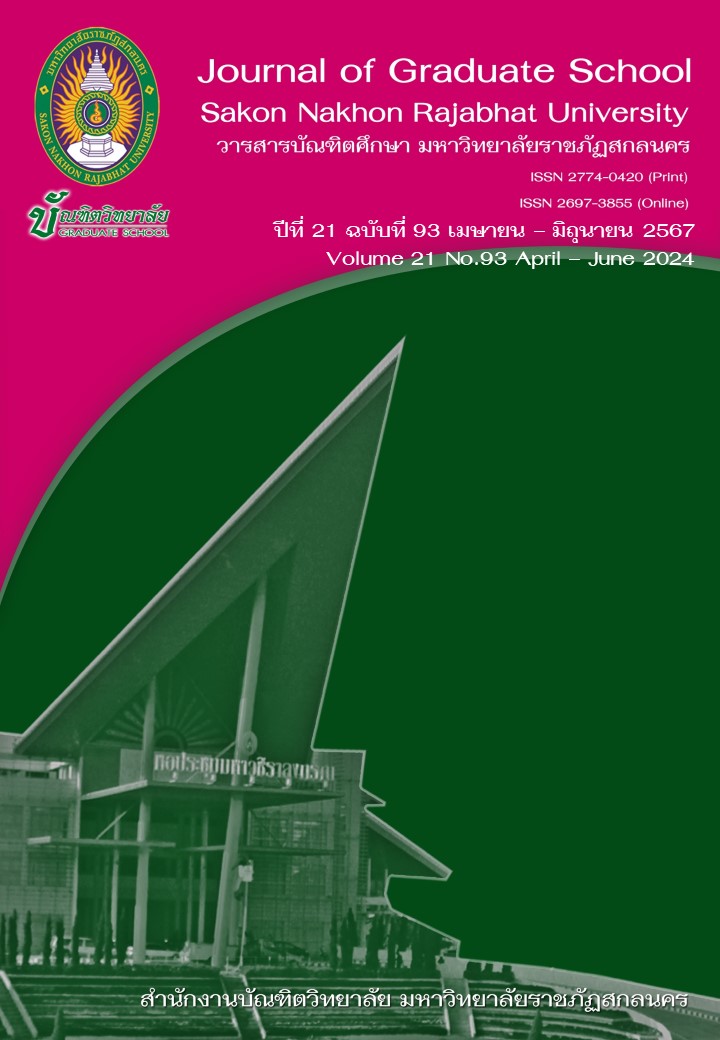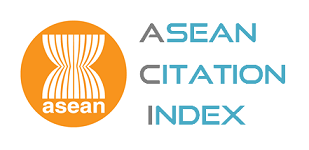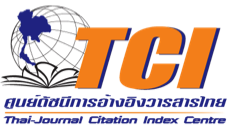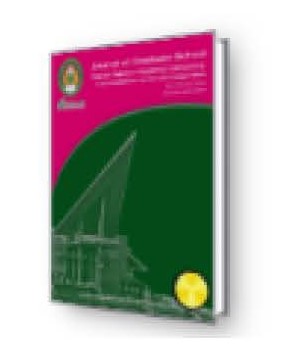A STUDY OF ENGLISH LANGUAGE LEARNING STRATEGIES OF STUDENT TEACHERS AT NAKHON SAWAN RAJABHAT UNIVERSITY
Keywords:
Language Learning Strategies, English Language Learning, Student TeachersAbstract
The purpose of this research was to examine the English language learning strategies of student teachers at Nakhon Sawan Rajabhat University. The sample for this research, obtained through purposive sampling, consisted of 44 second-year student teachers who majored in Mathematics, with a good grade point average in the English language comparable to student teachers majoring in English, and no prior classroom interaction or participation. The instrument for data collection was a set of questionnaires adopted from Oxford’s Strategy Inventory for Language Learning (SILL) Version 7.0. The SILL was translated into the Thai language and adapted to suit the Thai context, achieving an Index of Item Objective Congruence (IOC) of 0.89 based on reviews by three experts. The SILL consists of six categories: 1. memory, 2. cognitive, 3. compensation, 4. metacognitive, 5. affective, and 6. social strategies. The statistics used in analyzing data were mean, and standard deviation.
The research results revealed that student teachers employed all six aspects of language learning strategies at a medium level ( = 3.13, S.D.= 0.79). When considering each aspect, compensation strategies (
= 3.25, S.D. = 0.84) were most frequently employed, followed by metacognitive strategies (
= 3.24, S.D. = 0.94), affective strategies (
= 3.22, S.D. = 0.97), memory strategies (
= 3.12, S.D.= 0.84) and social strategies (
= 3.12, S.D. = 1.00) which had similar mean scores, whereas cognitive strategies (
= 2.83, S.D. = 0.94) were the least frequently utilized.
References
กนกรัตน์ คุณะสารพันธ์. (2559). ผลสัมฤทธิ์และกลยุทธ์การเรียนรู้ภาษาอังกฤษในค่ายอบรมภาษาอังกฤษของนักศึกษาปริญญาโททุน สควค. รุ่นที่ 1 สาขาวิชาคณิตศาสตร์ศึกษา วิทยาลัยนานาชาติ มหาวิทยาลัยราชภัฏสวนสุนันทา. รายงานผลการวิจัย. กรุงเทพฯ: มหาวิทยาลัยราชภัฏสวนสุนันทา.
กระทรวงศึกษาธิการ. (2562). คู่มือบริหารจัดการเวลาเรียน ลดเวลาเรียนเพิ่ม เวลารู้. กรุงเทพฯ: สำนักวิชาการและมาตรฐานการศึกษา.
กฤชเชาว์ นันทสุดแสวง. (2563). ทัศนคติของนักศึกษาที่มีต่อการเรียนการสอนภาษาอังกฤษในระดับต่ำ. วารสารมหาจุฬาวิชาการ, 7(1), 189–203.
ชุติมา วัฒนะคีรี. (2561). ความสามารถในการคิดวิเคราะห์ของนิสิตระดับปริญญาตรี มหาวิทยาลัยราชพฤกษ์. วารสารมนุษยศาสตร์และสังคมศาสตร์ มหาวิทยาลัยราชพฤกษ์, 4(1), 101–110.
นฤมล โคตรสมบัติ. (2546). กรณีศึกษาการใช้กลวิธีการเรียนภาษาอังกฤษของนักศึกษาระดับบัณฑิตศึกษา คณะวิทยาศาสตร์ มหาวิทยาลัยมหิดลเพื่อใช้ในการเรียนรู้ภาษาอังกฤษ. ปริญญานิพนธ์ ศศ.ม. นครปฐม: มหาวิทยาลัยมหิดล.
ศิวนนท์ นิลพาณิชย์. (2560). กลยุทธ์การเรียนรู้ภาษาอังกฤษของนักศึกษามหาวิทยาลัยชั้นปีที่ 1. วารสารวไลยอลงกรณ์ปริทัศน์ (มนุษยศาสตร์และสังคมศาสตร์), 7(2), 1–12.
สาธิตา สังข์พงษ์. (2564). การศึกษาการใช้กลยุทธ์การเรียนภาษาอังกฤษของนักศึกษาระดับปริญญาตรีชั้นปีที่ 1 มหาวิทยาลัยราชภัฏเทพสตรี. วารสารวิชาการคณะมนุษยศาสตร์และสังคมศาสตร์ มหาวิทยาลัยราชภัฏเทพสตรี, 12(3), 37–52.
สำนักงานคณะกรรมการพัฒนาการเศรษฐกิจและสังคมแห่งชาติ. (2561). ยุทธศาสตร์ชาติระยะ 20 ปี (พ.ศ. 2561–2580). (พิมพ์ครั้งที่ 2). กรุงเทพฯ: สำนักงานเลขานุการของคณะกรรมการ ยุทธศาสตร์ชาติ สำนักงานคณะกรรมการพัฒนาการเศรษฐกิจและสังคมแห่งชาติ.
อรุณี อรุณเรือง รพีพรรณ สุฐาปัญณกุล และภาวิณี อุ่นวัฒนา. (2560). กลวิธีการเรียนภาษาอังกฤษของนักศึกษาชั้นปีที่ 2 ระหว่างสาขาวิชาการท่องเที่ยวการโรงแรม ภาษาอังกฤษเพื่อการสื่อสารสากล. การประชุมวิชาการ มหาวิทยาลัยเทคโนโลยีราชมงคล ครั้งที่ 9 (9th RMUTNC) และการประชุมวิชาการนานาชาติ มหาวิทยาลัยเทคโนโลยีราชมงคล ครั้งที่ 8 (8th RMUTIC). 8 สิงหาคม 2560 หน้า 37–45. นนทบุรี: มหาวิทยาลัยเทคโนโลยีราชมงคล.
Brown, H. (1989). Principal of language learning and teaching. (3rded). Cambridge: Prentice Hall International (London) Ltd.
Khamkhien, A. (2013). Roles of English as an international language on learning strategies among Japanese and Thai learners. Journal of Teaching and Education, 2(2), 473–483.
Khatib, M., Hassanzadeh & M., Rezaei, S. (2011). Vocabulary Learning Strategies of Iranian Upper–Intermediate EFL Learners. International Education Studies, 4(2), 144–152.
Krashen, S. D. (1982). Principles and practice in second language acquisition. Oxford: Pergamon Press.
Oxford, R. L. (1990). Language learning strategies: what every teacher should know. Boston: Heinle & Heinle Publishers.
______. (1992/1993). Language learning strategies in a Nutshell: Update and ESL suggestions. TESOL Journal, 2, 18–22.
O’Malley, J.M. & Chamot, A.U. (1990). Learning Strategies in Second Language Acquisition. Cambridge: Cambridge University Press
Wenden, A & Rubin, Joan. (1987). Learner Strategies in Language Learning. New Jersey: Prentice Hall.
Willing, Ken. (1989). Teaching How to Learn: Learning Strategies in ESL. Sydney: National Centre for English Language Teaching and Research.
Yaowadee Jones. (2010). A Study of English Learning Strategies Used by Matthayomsuksa 6 Students of the Top Ten O–Net Scoring Schools. Srinakharinwirot Research and Development (Journal of Humanities and Social Sciences), 2(4), 138–152.
Downloads
Published
How to Cite
Issue
Section
License
Copyright (c) 2024 Journal of Graduate School Sakon Nakhon Rajabhat University

This work is licensed under a Creative Commons Attribution-NonCommercial-NoDerivatives 4.0 International License.
บทความทุกบทความที่ตีพิมพ์ในวารสารบัณฑิตศึกษา มหาวิทยาลัยราชภัฏสกลนคร ถือว่าเป็นลิขสิทธิ์ของบัณฑิตวิทยาลัย มหาวิทยาลัยราชภัฏสกลนคร










